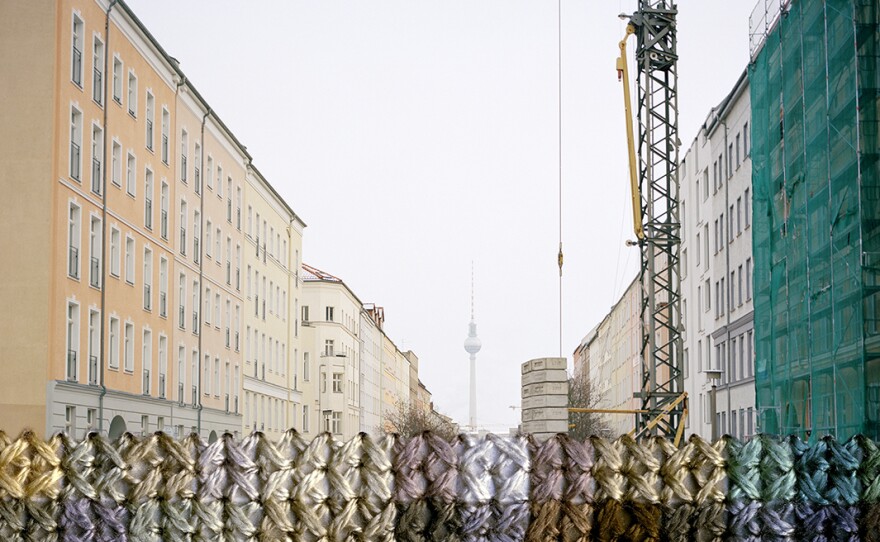How do you photograph something that's not really there? Like the Berlin Wall, for example.
, an assistant professor of photography at Loyola Marymount University, has one approach: She takes pictures where the wall once stood, prints them out, and then literally rebuilds it with a needle and thread.
The fall of the Berlin Wall decisively marked both the physical and metaphorical end of an era. But memory doesn't really work like that. We can dismantle a physical barrier, but its traces will persist — either in the landscape itself or in collective memory.
That's what first struck Meyer about the Berlin Wall — how, even in its physical absence, it has somehow remained. Wandering through the now-vibrant neighborhoods, she says, "it was hard to imagine how they'd be divided so severely — and how that would have been part of the visual landscape every day."
Meyer interprets what the separation must have felt like by obscuring the image with cross-stitching.
"The sewing is raised off the print and becomes a barrier — and a pixelated view of what's behind it," she says. "I'm equating memory and forgetting with digital file corruption."
That mental leap — from the Berlin Wall's legacy to digital file corruption — is not a huge one.
Because at least in the case of the Berlin Wall, some physical remnants remain to cue our collective memory. But moving forward, if we want to demarcate history — or even just our lives — into chapters, will we able to draw lines in the sand if so much exists in the cloud?
Copyright 2021 NPR. To see more, visit https://www.npr.org. 9(MDA4NjIwNTkwMDEzMjI4NDY0MjY4ZTBlNA004))










